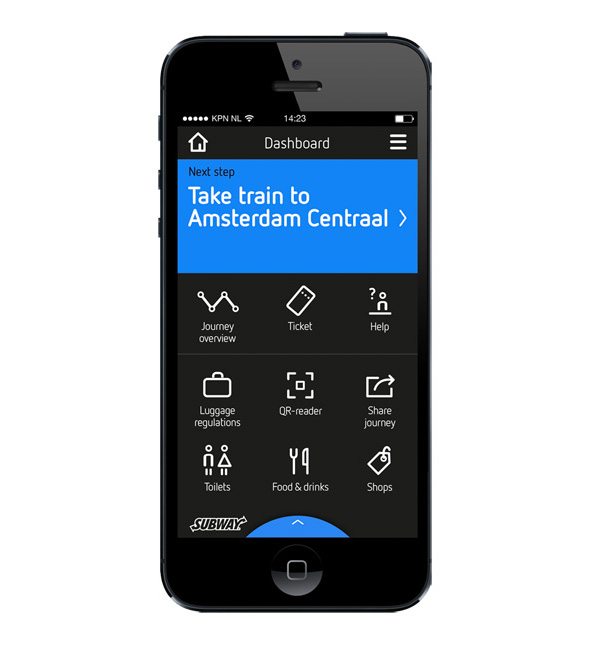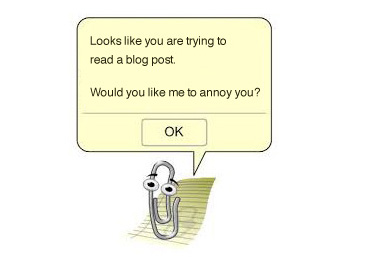Article
Personalized experiences

Today’s customers have higher expectations of brands than ever before. A good understanding of the customer’s needs is necessary to meet these expectations. But how can you gain an understanding of their needs when you are dealing with a highly diversified group of people using a medium where you can’t talk to them physically?
At Edenspiekermann I am currently researching the concept of personalized interfaces: a method to create personalized user-experiences. I believe that this method supplies great opportunities to tailor experiences — in a digital landscape — according to different customer needs. In part one of this series, I would like to explain more about the core of this method, the benefits and how it works.
The fundamentals
The concept of personalized interfaces is based on two fundamental ideas:
- The system is able to understand the user’s needs and adapt to them, making it possible for the users to reach their goal through a minimal amount of interactions.
- The interface aims to predict the behavior of the user.
With personalized interfaces we aim to predict the users’ next step and use that information to lead them to an interface that suits their needs. But how do you predict user behavior?
How do you predict user behavior?
Predicting user behavior is pretty much like looking into a crystal ball combined with statistics. It’s impossible to get all the predictions right. Look at Google for example. Google Now tries to predict your next step but fails a number of times. Striking, if you ask me, as they have tons of information at their disposal.
 The good news is that if we collect the right signals and use the technology at our disposal, we come up with the right prediction most of the time. With statistics and technology we have some effective tools to learn from human habits. Humans tend to do things out of habit: we do the same things day in, day out, and similar people do similar things.
The good news is that if we collect the right signals and use the technology at our disposal, we come up with the right prediction most of the time. With statistics and technology we have some effective tools to learn from human habits. Humans tend to do things out of habit: we do the same things day in, day out, and similar people do similar things.
For example, if we go to work using public transport we always use the same apps to look for train schedules and delays. Or most people use Google to search the Internet out of habit. We can learn people’s behaviors through these habits and categorize them. Of course I am simplifying a bit because there are millions of people with millions of user pattern variations, but you get the idea. The goal of personalized experiences is to find those repetitive actions, learn from them, predict them and hand them to the user in the most convenient way possible.
This Video of Google Now shows what Google does by learning the user’s habits.
User satisfaction
If you predict users’ behaviors correctly, you can save them time and they will feel more understood. Also, this releases the user from the strain of processing boring and repetitive information and actions. You will see that when the users are satisfied with your online experiences they will become more loyal to your brand. And isn’t that what we’re all aiming to achieve?
How does it work?
In order to create personalized experiences we need to know “the context of use”. This can be determined by the core-functionality of a product, current state of the application, sensors in the device (GPS, Motion, etc) and the next most plausible action of the user. These aren’t all the criteria that matter while using an interface; the criteria can also depend on the purpose of the product. Nevertheless, these are indications of “the context of use”.
Let me give an example of using “context of use”. In the Netherlands, bank debit cards don’t work by default outside of Europe. For example: I’m traveling to the United States but I can’t pay with my debit card until I unlock it with my banking app or through the bank’s web interface. When I log in through the web interface when I’m in the States the bank could use my location combined with the fact that I forgot to activate my debit card for use outside Europe. The bank could make a message on the first page I log in to which says: “Activate your debit card for worldwide usage”. By doing that, I don’t have to search for it while I’m stressed because I can’t pay for my hotel.
In order to make interfaces personalized we need to build user profiles. These profiles can contain information such as the following:
- Where does the user click/tap within the app and how often? This gives insights into the user’s interests and preferences.
- How long does the user look at the content? If the user looks for quite a while at the content it implies that he or she likes the content and is engaged.
- What is the path the user takes? How does the user find the content they like? Can you make personalized “shortcuts” towards content?
- Let users make explicit decisions about what they like or don’t like. For example, Spotify Radio lets you like or dislike a track and at the same time refines the selection of future songs for the radio station.
Understanding “the context of use” makes it possible to identify certain patterns in the user’s behavior. But what if you don’t know this yet because you’re dealing with a first time user?
We can do this by asking the user for a little bit of input, relevant for your service. In the movie “Her” directed by Spike Jonze you see an example of “first day questions”.
Trailer of the movie – the questions are in the first 40 seconds.
In the movie, the questions are unrelated to the goal of use but the way of asking first day questions was good. With the answers you get from the first time user you can try to put the user into a group with similar people. And from there, you can build a profile. A good example of “first day use” questions is Flipboard. When you use Flipboard for the first time you have to pick categories you are interested in. Flipboard uses this information to tailor the content to what you want.

In a concept air travel system we developed at Edenspiekermann, we asked as a first time question the user’s booking number. With this information we already know which flight someone takes, whether they travel alone or in a group and when they booked a hotel in the same booking we also know their final destination. If some information is missing in the booking number we can ask the user the address of the hotel. Just by asking for the booking number we avoid that the user has to enter more information than necessary.
 First time questions in an airport app. We only ask for the booking number.
First time questions in an airport app. We only ask for the booking number.
In order to successfully create personalized interfaces you should always enable users to make choices within their own experience. Moreover, instead of forcing them to certain behavior, it’s better to suggest actions and provide other options. We always need to give users an escape to do something else and learn form the escape they use.
In the air travel concept app, we also used the principle of “choice”. This feature helps passengers by giving them advice about how to get from the airport to their final destination. In this case, we knew in advance that the passenger needed to take the train at a certain point in the journey. Instead of solely showing an option to go to the train schedule, we still gave the passenger the opportunity to open their flight ticket, luggage information and other features.
 In short
In short
By making interfaces learn about user behavior you let the user feel understood, valued and cherished. And when you do this right most of the time, they will forgive you when you (sometimes) do it wrong.
To build profiles, and to put people in them, look for repetitive behavior patterns and learn from those choices. If you have it right the user would not notice. If you do this wrong too many times, or do it in an intrusive way, you will fail miserably (remember Clippie?). So make sure you ask the users the right questions on the first day of use and give them choices in case your prediction wasn’t right so they can still find what they wanted to do.
 This was an introduction to personalized interfaces. In the next post in this series we will go in depth into how to alter the way you display content for different user types, besides the functionality of a product.
This was an introduction to personalized interfaces. In the next post in this series we will go in depth into how to alter the way you display content for different user types, besides the functionality of a product.